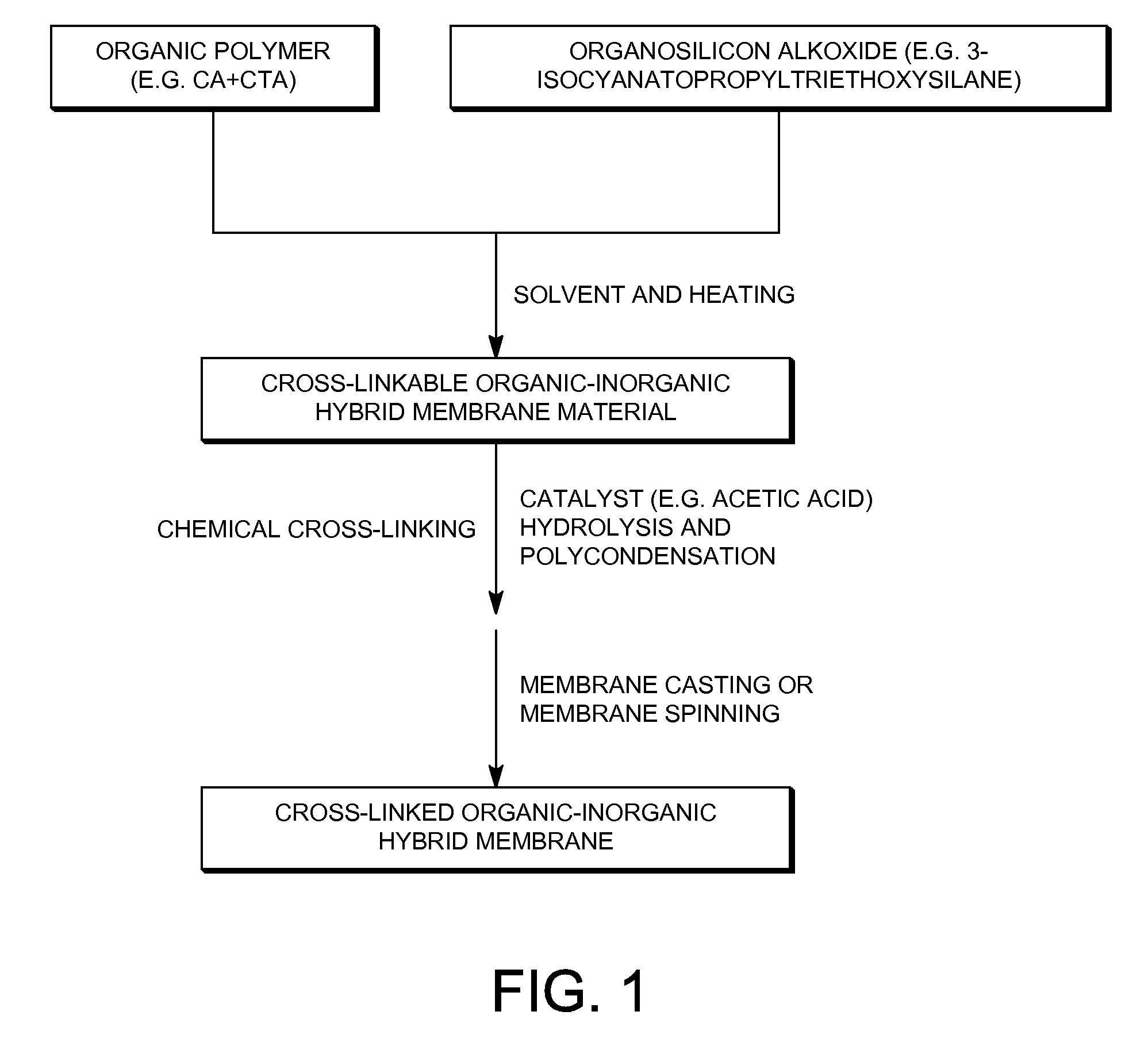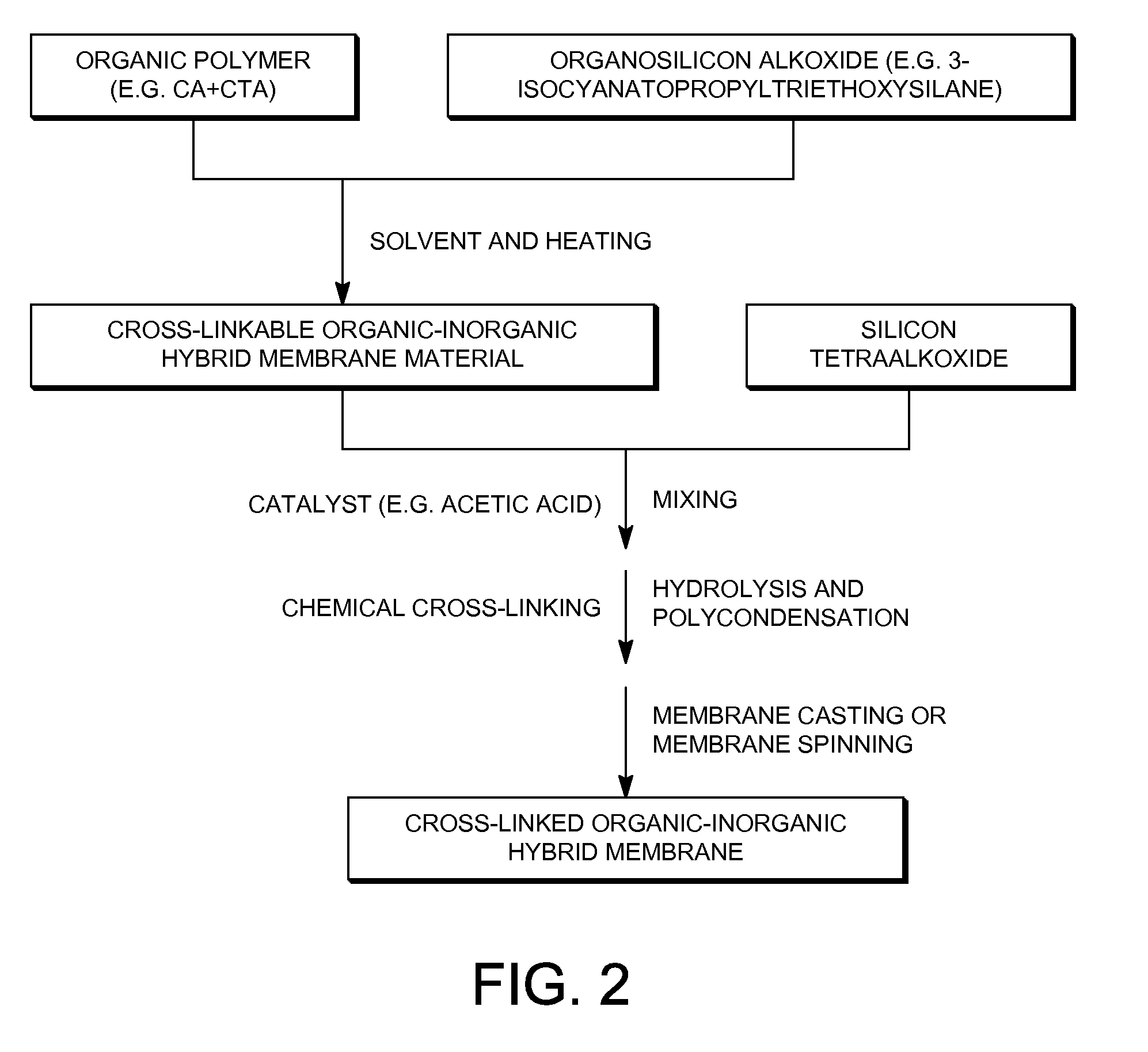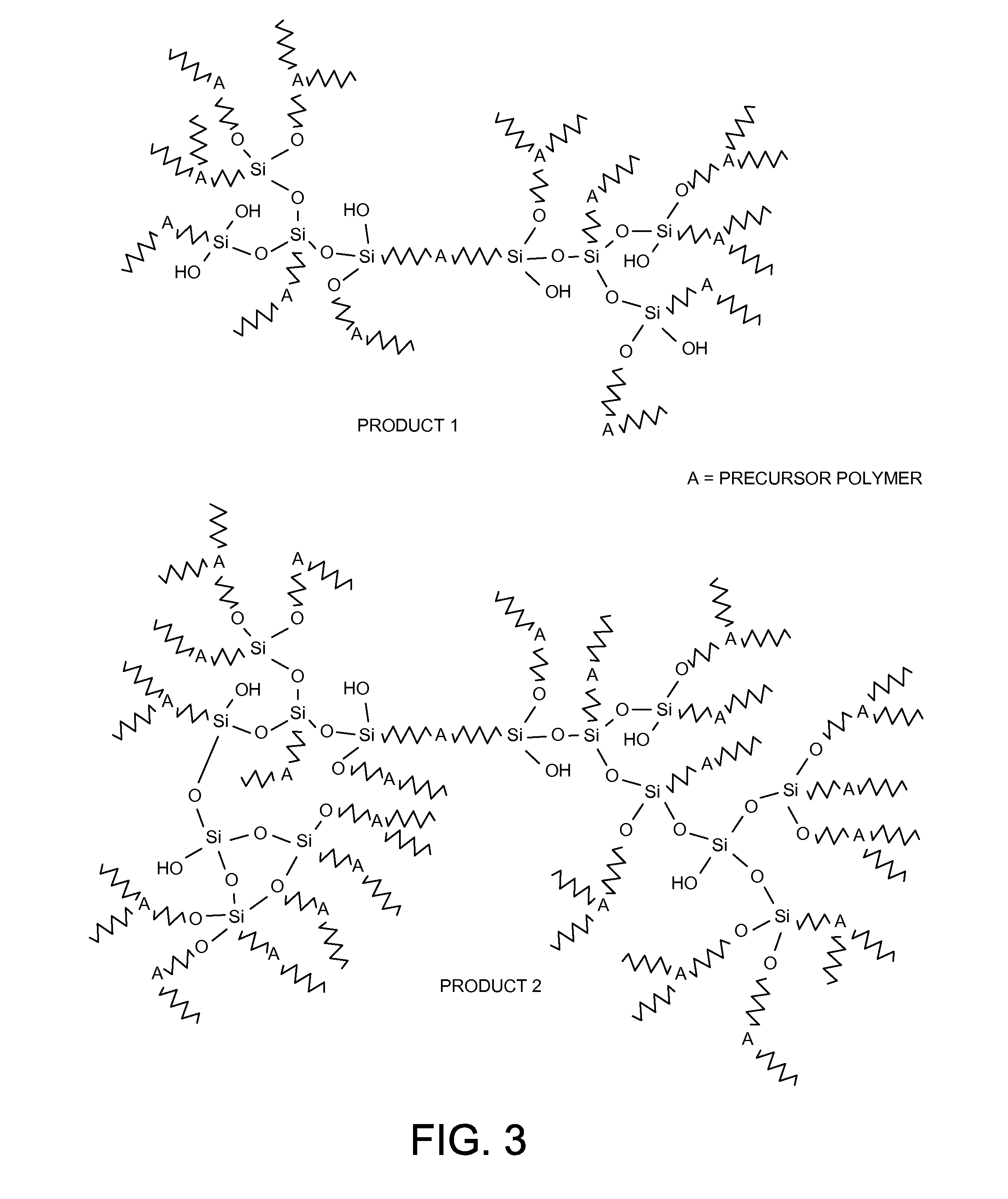Plasticization resistant membranes
- Summary
- Abstract
- Description
- Claims
- Application Information
AI Technical Summary
Benefits of technology
Problems solved by technology
Method used
Image
Examples
example 1
Preparation of Cross-Linked Cellulose Acetate-Polyurethanepropylsilsesquioxane Organic-Inorganic Hybrid Membrane (Abbreviated Herein as CA-Urethane-Si-2-1 Membrane)
1) A Cross-Linkable Cellulose Acetate-Urethanepropyltriethoxysilane Organic-Inorganic Membrane Material was Synthesized According to the Procedure as Shown in FIG. 3
[0069]Five grams (18.9 mmol) of cellulose acetate polymer (“EASTMAN” Cellulose Acetate (CA-398-3) from Eastman Chemical Company, Kingsport, Tenn.) was dissolved in 119.5 grams of tetrahydrofuran or 1,4-dioxane solvent. 1.29 grams (5.2 mmol) of 3-isocyanatopropyltriethoxysilane (from Gelest, Inc, Morrisville, Pa.) was added to the CA solution. After the solution was heated at 60° C. for 48 hours, a solution containing 5.0 wt-% of the cross-linkable cellulose acetate-urethanepropyltriethoxysilane organic-inorganic membrane material was obtained. About half of the hydroxyl groups on the cellulose acetate polymer had been substituted by triethoxysilyl groups throu...
example 2
Characterization of CA-Urethane-Si-2-1 Membrane
[0071]The successful formation of covalently interpolymer-chain-connected organic-inorganic hybrid networks in the cross-linked CA-Urethane-Si-2-1 membrane was confirmed by FTIR spectra. The formation of urethane linkages between cellulose acetate polymer and the inorganic polysilsesquioxane segments in the cross-linked cellulose acetate-polyurethanepropylsilsesquioxane membrane was confirmed by FTIR spectra. FIG. 5 shows the FTIR spectra of pure cellulose acetate polymer membrane and the cross-linked CA-Urethane-Si-2-1 membrane. As shown in FIG. 5, the cross-linked CA-Urethane-Si-2-1 membrane showed the appearance of a vibration band at about 1568 cm−1 corresponding to a NH—CO group, indicating the formation of urethane linkages.
example 3
Preparation of Cross-Linked Cellulose Acetate-Polyurethanepropylsilsesquioxane Organic-Inorganic Hybrid Membrane (Abbreviated Herein as CA-Urethane-Si-1-1 Membrane)
1) Synthesis of Cross-Linkable Ca-Urethanepropyltriethoxysilane Organic-Inorganic Membrane Material
[0072]5.0 Grams (18.9 mmol) of cellulose acetate polymer (“EASTMAN” Cellulose Acetate (CA-398-3) from Eastman Chemical Company, Kingsport, Tenn.) was dissolved in 144.0 grams of THF or 1,4-dioxane solvent. 2.58 grams (10.4 mmol) of 3-isocyanatopropyltriethoxysilane (from Gelest, Inc, Morrisville, Pa.) was added to the CA solution. After the solution was heated at 60° C. for 48 hours, a solution containing 5.0 wt-% of the cross-linkable CA-urethanepropyltriethoxysilane organic-inorganic membrane material was obtained. All the hydroxyl groups on the CA polymer had been substituted by triethoxysilyl groups through urethane linkages in this cross-linkable cellulose acetate-urethanepropyltriethoxysilane organic-inorganic membrane...
PUM
| Property | Measurement | Unit |
|---|---|---|
| Temperature | aaaaa | aaaaa |
| Temperature | aaaaa | aaaaa |
| Temperature | aaaaa | aaaaa |
Abstract
Description
Claims
Application Information
 Login to View More
Login to View More - Generate Ideas
- Intellectual Property
- Life Sciences
- Materials
- Tech Scout
- Unparalleled Data Quality
- Higher Quality Content
- 60% Fewer Hallucinations
Browse by: Latest US Patents, China's latest patents, Technical Efficacy Thesaurus, Application Domain, Technology Topic, Popular Technical Reports.
© 2025 PatSnap. All rights reserved.Legal|Privacy policy|Modern Slavery Act Transparency Statement|Sitemap|About US| Contact US: help@patsnap.com



